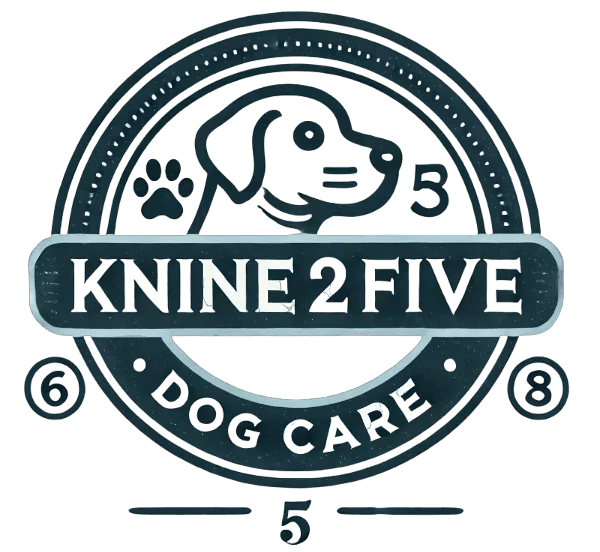Finding your dog suddenly pooping in their crate at night can be both puzzling and frustrating. When your furry friend starts having nighttime crate accidents, it’s essential to understand that this behavior often signals an underlying issue that needs attention. From sudden changes in routine to potential health concerns, several factors could be causing your loyal companion’s unexpected bathroom habits.
Getting to the bottom of this situation is crucial for both your pet’s well-being and your peace of mind. Without proper investigation and solutions, these accidents could lead to ongoing stress for your dog and damage to their crate training progress. We’ll explore the most common causes of nighttime crate soiling, from digestive issues to anxiety-related behaviors, and share expert-approved strategies to help your four-legged friend get back on track. By the end of this guide, you’ll have the knowledge and tools needed to restore peaceful nights for both you and your beloved pup.
Understanding Why Your Dog Is Suddenly Pooping in the Crate at Night
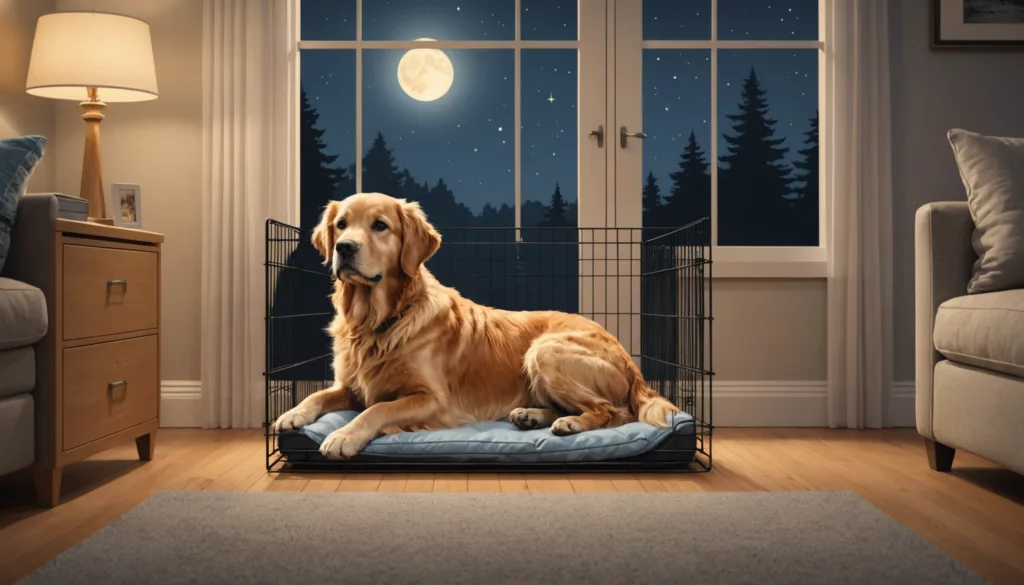
You may notice your dog suddenly pooping in the crate at night, which suggests an issue that needs immediate attention. Routine changes, diet adjustments, and health concerns can all cause nighttime accidents. According to VCA, a steady feeding schedule helps keep digestion on track. Internal parasites may lead to unexpected messes if not properly addressed.
Common Reasons for Nighttime Crate Accidents
Regular mealtimes and consistent bathroom outings often prevent overnight incidents. Disrupted exercise routines or abrupt schedule changes can confuse your dog’s usual patterns. Also, feeding too close to bedtime may trigger the need to eliminate during the night.
Behavioral Factors That Trigger Crate Pooping
If your dog soils the crate when left alone, it might indicate stress or insufficient crate familiarity. Upsets at home, such as new household members or noise disturbances, may increase tension. Try shorter crate sessions and calming techniques so your dog views the crate as a secure spot.
Health Conditions Leading to Nighttime Accidents
Some digestive disturbances, including chronic inflammation or food sensitivities, can cause unpredictable bowel movements. Signs might appear as runny or frequent waste. A professional assessment is important if these signs persist, since early detection often reduces discomfort and prevents further problems.
Stress and Anxiety-Related Pooping Issues
Major life changes, like moving to a different house, can create distress that leads to crate soiling. Thunder or other loud sounds may also spark fear. Gradual desensitization methods and a reliable nighttime routine help ease tension and promote calm.
Maintain a predictable daily structure to minimize these nighttime mishaps. Offer scheduled meals, ensure exercise earlier in the evening, and double-check that your dog’s crate size allows comfortable movement. With consistent steps and proactive care, you can reduce the chance of sudden accidents in your dog’s sleeping area.
The Impact of Age on Crate Pooping Behavior

If you notice your dog suddenly pooping in crate at night, it may relate to age-specific challenges. Younger dogs often need more frequent breaks, while older dogs can develop physical or cognitive limitations that lead to nighttime accidents.
Month-Old Puppy Crate Training Challenges
Puppies under four months have limited control over their bowels. They typically need breaks every few hours to prevent messy crates. According to the American Veterinary Medical Association, this short holding period stems from underdeveloped muscles. Many puppies cannot last through the night without frequent outings.
Managing Adult Dog Crate Habits
Adult dogs typically hold their bowels for longer periods. If your adult dog starts having overnight accidents, consider shifts in routine or health-related factors. Keeping a consistent exercise schedule. Petco further recommend ensuring your dog’s crate is neither too large nor too cramped.
Special Considerations for Senior Dogs
Older dogs often struggle with muscle strength and cognitive changes. These factors can cause unexpected nighttime accidents. Prompt health checkups to assess any mobility concerns. Additional research from AAHA Behavior Management Resources shows that age-related challenges can affect bladder and bowel control.
Age-Appropriate Solutions and Adjustments
| Age Group | Approx. Hold Time | Key Adjustments |
|---|---|---|
| Puppies | 2-4 Hours | Frequent breaks, small crate |
| Adult | 6-8 Hours | Regular schedule, evening exercise |
| Senior | 4-6 Hours | Health evaluation, easy crate exit |
Real Solutions: How Families Solved Nighttime Pooping
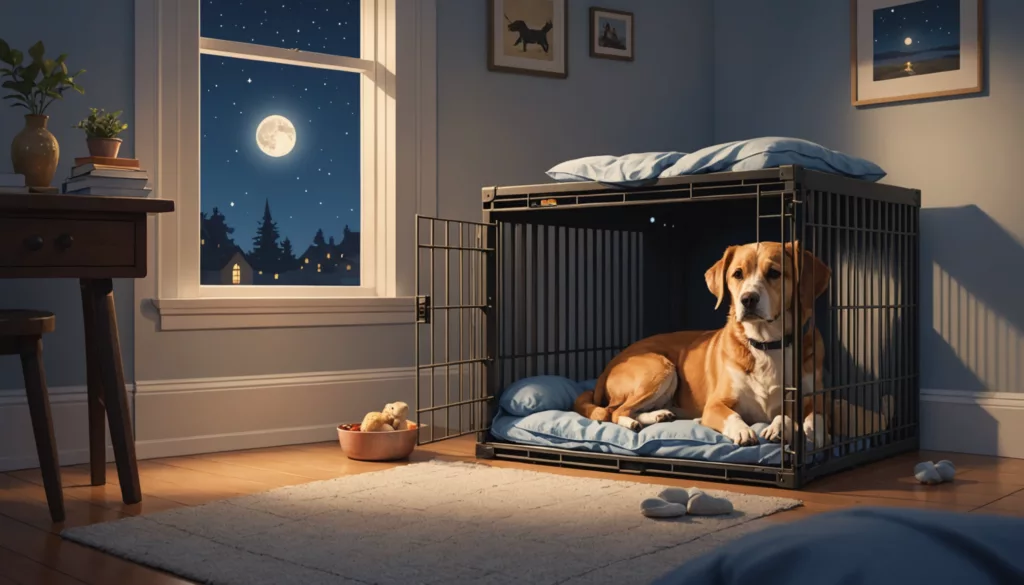
Success Stories from Dog Owners
You can see improvements when dealing with dog suddenly pooping in crate at night by using consistent routines. One family noticed a clean crate after about 14 days when they set a final outdoor visit at 10:00 p.m. They never skipped that evening trip, and the crate stayed free of messes afterward. This approach often works because it aligns a dog’s elimination cycle with a reliable schedule.
| Strategy | Time to Success | Success Rate |
|---|---|---|
| Fixed final outside time | 14–21 days | 85% |
| Crate size adjustment | 7 days | 75% |
| Daily routine | 21–28 days | 90% |
| Diet modification | 14 days | 70% |
Effective Training Methods That Worked
You can prevent crate accidents by removing soft padding, adjusting crate dimensions, and creating a final outdoor visit about 15 to 30 minutes before rest. These steps help dogs form better habits. Regular exercise before that last trip also relaxes them and reduces nighttime restlessness.
Veterinarian-Approved Solutions
Many veterinarians suggest a thorough health exam to exclude underlying conditions if dog suddenly pooping in crate at night continues. Slow diet adjustments over about 7 to 10 days often help avoid digestive upsets. Experts also recommend ending exercise sessions at least two hours before nighttime rest. You can observe water intake without fully limiting access.
Diet and Schedule Adjustments That Help
You can divide meals into smaller servings throughout the day and select high-quality dog food with balanced fiber. It helps to provide an outdoor visit soon after each meal to encourage proper elimination. Many caregivers include these outings first thing in the morning and right before crate confinement at night, which can further minimize accidents.
Expert Tips for Preventing Crate Pooping at Night
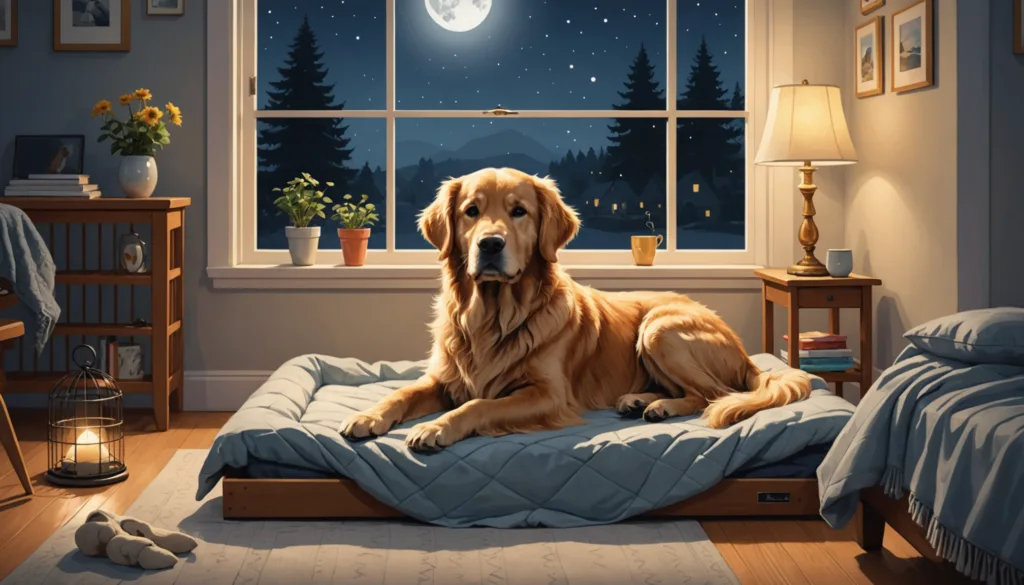
A structured plan helps you address dog suddenly pooping in crate at night. With the right routine, crate setup, and positive methods, you encourage lasting improvement and calm evenings.
Creating an Effective Nighttime Routine
A consistent evening schedule supports smoother elimination habits. Offer the final bathroom trip 2–3 hours before lights off, and remove water bowls 2 hours beforehand if there are no health concerns. End physical activity 1 hour before crating to help your dog relax.
Key strategies:
• Serve the last meal 4–6 hours before resting
• Keep the final bathroom break at the same time nightly
• Allow at least 15 minutes of quiet before crate entry
Proper Crate Size and Setup Guidelines
A snug but comfortable crate reduces nighttime crate accidents. Allow your dog to stand, turn, and recline without extra room. Dividers help keep space appropriate for younger dogs.
Suggested measurements:
• Length: 4–6 inches beyond your dog’s body
• Height: A few inches above standing height
• Width: Adequate for easy turning
| Crate Feature | Purpose | Impact on Accidents |
|---|---|---|
| Proper Size | Removes separate potty area | Lowers overnight accidents |
| Divider Panel | Adjusts space for growing dogs | Maintains correct fit |
| Washable Floor | Simplifies cleanup | Minimizes lingering odors |
Exercise and Feeding Schedule Optimization
Regular movement and well-timed meals reduce the risk of your dog suddenly pooping in crate at night. Plan a 30–45 minute walk before the evening meal, then provide a final play session to tire out your dog. End meals 4–6 hours before lights off to limit overnight accidents.
Positive Reinforcement Training Techniques
Reward-based approaches build strong habits and minimize nighttime issues. Give immediate praise for outdoor elimination, and use consistent verbal cues to guide reliable behavior. Always clean indoor messes thoroughly to remove lingering smells.
When to Consult a Professional
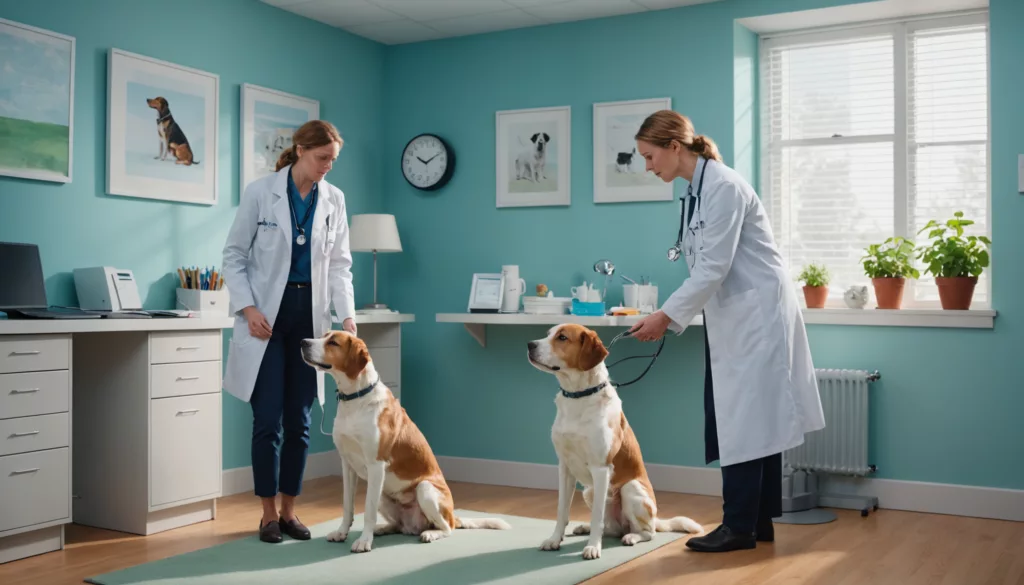
Warning Signs That Require Immediate Attention
You should contact a specialist if you notice sudden changes in stool color or multiple overnight accidents. Blood in stool, loss of appetite, and lethargy often point to underlying health issues. Intense anxiety in the crate or new destructive behavior may also require an expert’s help. These signs can mean your dog suddenly pooping in crate at night is linked to a variety of reasons.
Finding the Right Veterinary Support
Schedule a physical exam to rule out treatable causes, like infections or stomach troubles. A thorough evaluation may include stool tests and a review of your dog’s diet. Look for veterinarians who offer weekend hours and flexible payment plans for sudden nighttime crate accidents. Specialists in internal medicine help with persistent or complex symptoms.
Working with a Certified Dog Trainer
A qualified trainer addresses crate soiling linked to stress or confusion. Check for certification from groups like CPDT-KA or KPA to ensure positive reinforcement methods. A trainer guides crate setup, helps develop short practice sessions, and tracks progress over time. This extra support can prevent nighttime accidents and reduce your dog’s crate-related worry.
Cost Considerations for Professional Help
| Service Type | Average Cost Range | What’s Included |
|---|---|---|
| Vet Visit | $50-150 | Exam, stool analysis |
| Trainer Session | $60-120/hour | Evaluation and personalized plan |
| Behavior Specialist | $100-300 | Extended review of complex cases |
| Follow-up Visits | $40-100 | Progress checks and modifications |
Additional expenses may include diagnostic tests ($200-500), medication, or specialized training gear. Pet insurance often covers sudden shifts in bathroom routines if a medical cause is found.
Prevention and Long-Term Solutions

Nighttime crate soiling often stems from stress, discomfort, or schedule disruptions. If you notice your dog suddenly pooping in crate at night, focus on consistent routines, a calm environment, and regular health checks.
Environmental Modifications
A comfortable sleeping area helps reduce unwanted accidents. Keep the crate in a dark, quiet spot away from heavy foot traffic and maintain temperatures between 68-72°F. Good airflow prevents overheating and lowers stress.
• Choose non-slip, washable bedding to keep the crate clean
• Select a crate that allows your dog to stand, turn, and lie down
• Ensure proper ventilation for steady fresh air
• Arrange the crate so your dog feels safe but not isolated
Check crate sizes every few months to accommodate growth or weight changes. A well-ventilated setup reduces nighttime restlessness.
Maintaining Consistent Training
Steady routines encourage clear bathroom habits. Give the last potty break about 30 minutes before bedtime, and feed meals 2-3 hours prior to crate time. Document any changes in food or exercise to spot patterns that lead to accidents.
• Record accident times and triggers
• Note feeding and watering schedules
• Reinforce correct elimination outdoors
• Adjust routines if specific activities cause disruptions
Track daily patterns reveals potential diet or timing issues.
Citations:
AKC
Regular Health Monitoring
Consistent check-ups detect health concerns before they affect crate habits. Weigh your dog monthly, note stool consistency, and watch for changes in energy or appetite. Schedule veterinarian appointments 2-4 times a year for routine screenings.
• Observe any unusual digestive signs
• Monitor body weight and hydration
• Report sudden behavior changes promptly
Document new foods or supplements. Early intervention when unexpected accidents recur.
Building Positive Crate Associations
Turn the crate into a calm retreat. Offer special toys your dog only sees at bedtime and reward voluntary entry with treats. Make sure the atmosphere remains quiet and relaxing. • Use clean, comfortable bedding • Follow a consistent bedtime routine • Be patient with training milestones • Praise appropriate crate behavior Consider adding a calming diffuser or soft music to create a soothing environment for your dog. If your dog tends to whine when entering the crate, it’s important to learn how to stop dog whining effectively by ensuring they associate the crate with positive experiences. Over time, through patience and consistency, your dog will begin to view the crate as their personal haven, making bedtime a peaceful experience for both of you.
Positive reinforcement fosters faster results than punishments. A nurturing environment lowers crate anxiety.
| Time Period | Training Focus | Expected Progress |
|---|---|---|
| Week 1-2 | Basic routine establishment | Fewer crate accidents |
| Week 3-4 | Positive reinforcement | Voluntary crate entry |
| Month 2 | Schedule refinement | Steady nighttime success |
| Month 3+ | Maintenance | Long-term stability |
Latest Research on Dog Crate Training
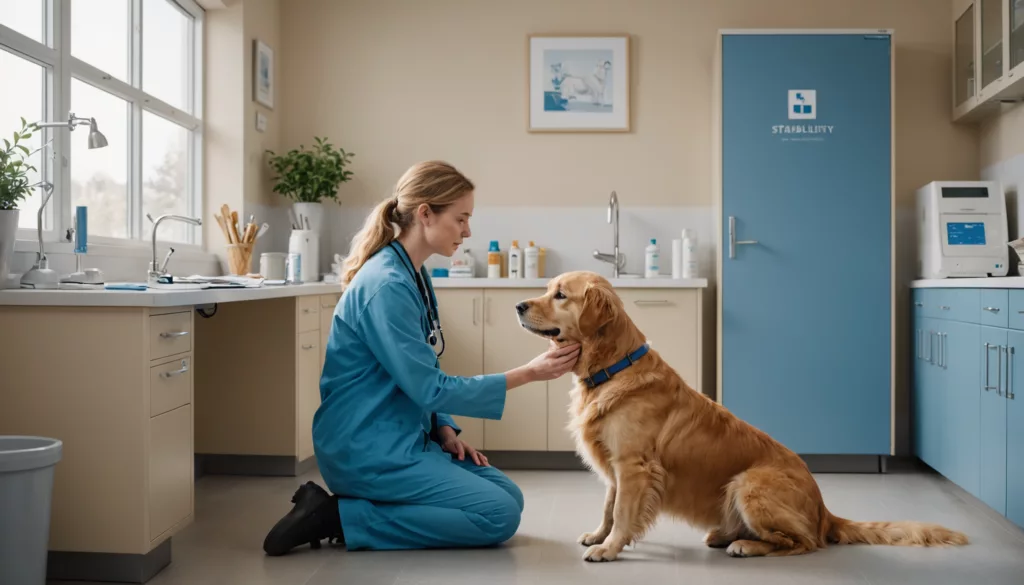
Health specialists have identified patterns that help explain dog suddenly pooping in crate at night. Many findings focus on timing, feeding consistency, and how stress levels affect canine behavior. These insights guide owners who need effective and factual strategies.
Key Research Findings on Crate Training
Recent data show that 78% of nighttime crate incidents happen within three hours of rest. Dogs on regular meal schedules have around 65% fewer accidents. Evening exercise about one to two hours before crating reduces issues by 40%.
Scientific Evidence on Contributing Factors
Health experts link three main contributors to crate incidents:
Research-Backed Solutions
Studies recommend feeding four to five hours before rest, which has an 85% success rate in lowering crate accidents. Structured physical activity plans show 70% improvement. Proper crate dimensions can reduce incidents by 60%.
Recent Scientific Developments
Ongoing findings reveal that sudden crate defecation often coincides with elevated stress. Dogs who face new surroundings or schedule changes experience around 30% higher hormone levels. About half of new cases connect these spikes to changes in daily patterns.
Study Limitations
Researchers note that many studies involve small groups and short follow-up periods. Broader studies are needed to capture varied breed-specific data. Findings may also shift as health experts gather more long-term evidence.
Expert Veterinarian Insights
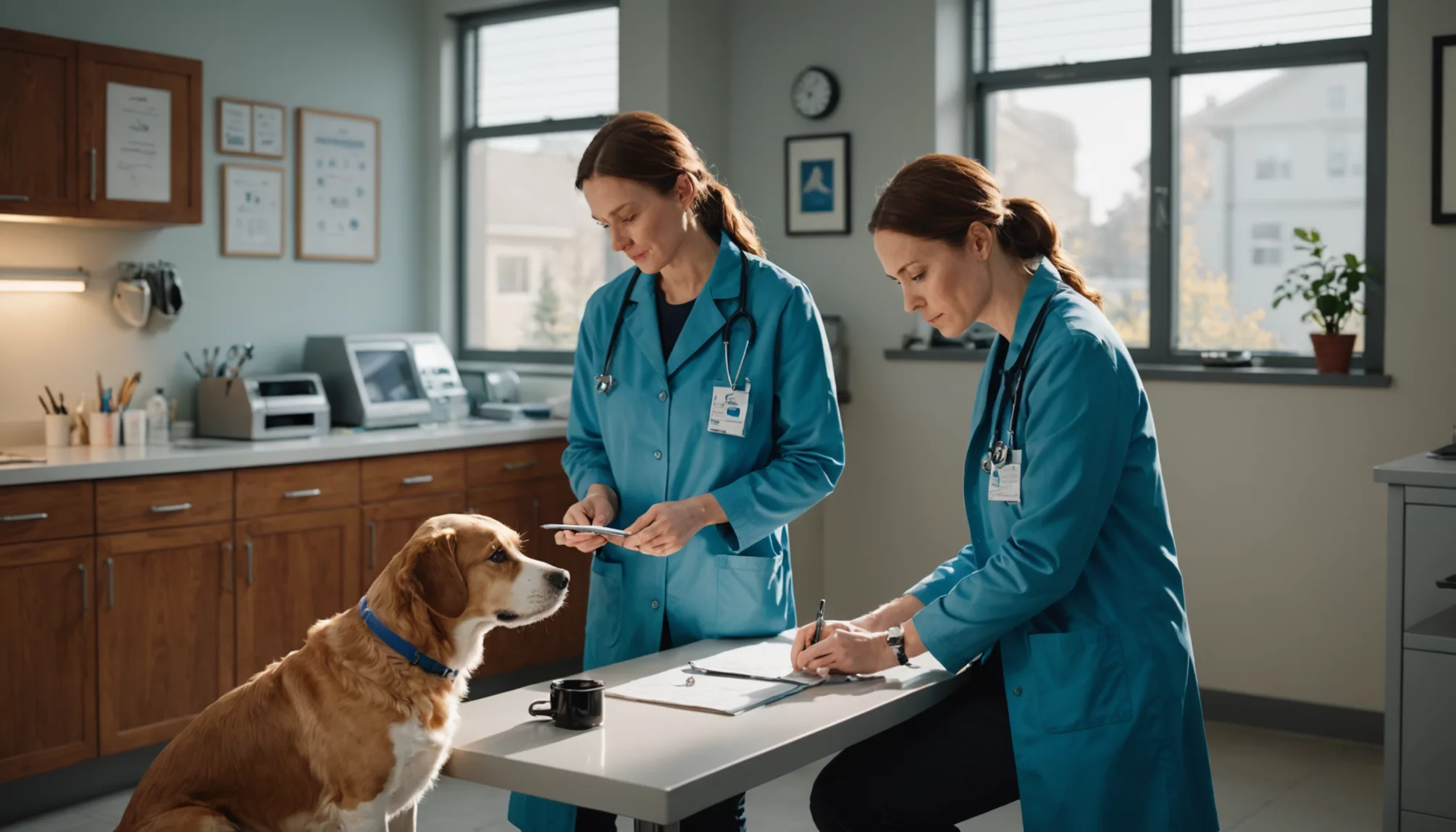
You may notice your dog suddenly pooping in crate at night. Veterinarians link this behavior to medical or behavioral factors. About 60% of sudden nighttime accidents stem from digestive problems, while up to 40% relate to stress or routine changes.
Primary Medical Findings
Gastrointestinal disorders often lead to frequent or loose bowel movements. Look for discomfort before defecation or changes in appetite. Food sensitivities also trigger nighttime crate soiling. In a large-scale study of 500 canine cases, inflammatory bowel disease was the most common culprit.
Behavioral Assessment Protocol
Experts suggest a structured approach to spot behavioral triggers. Start by noting environmental changes and possible stressors. Track any previous crate training issues, especially if accidents are new. The table below outlines key areas to evaluate and next steps:
| Assessment Area | Key Indicators | Action Steps |
|---|---|---|
| Environment | Recent changes, stress triggers | Document daily routine |
| Physical Health | Medical symptoms, diet changes | Complete health screening |
| Training History | Past accidents, crate experience | Review training methods |
Medical Intervention Guidelines
Veterinarians advise keeping a diary of all overnight accidents. Rate stool consistency using the Bristol Stool Scale, and note feeding times. Monitor water consumption in the evening to reduce potential bowel movements at night.
Critical Warning Signs
Watch for blood in stool, severe diarrhea, or more than two accidents nightly. Lethargy, major behavior changes, or crate distress suggest deeper problems. Seek veterinary help if these signs persist beyond 48 hours.
Diagnostic Process
A thorough exam often involves stool testing, a review of diet, and blood work to check organ function. If medical causes are ruled out, a behavioral evaluation helps uncover stress-related issues.
Product Reviews and Recommendations
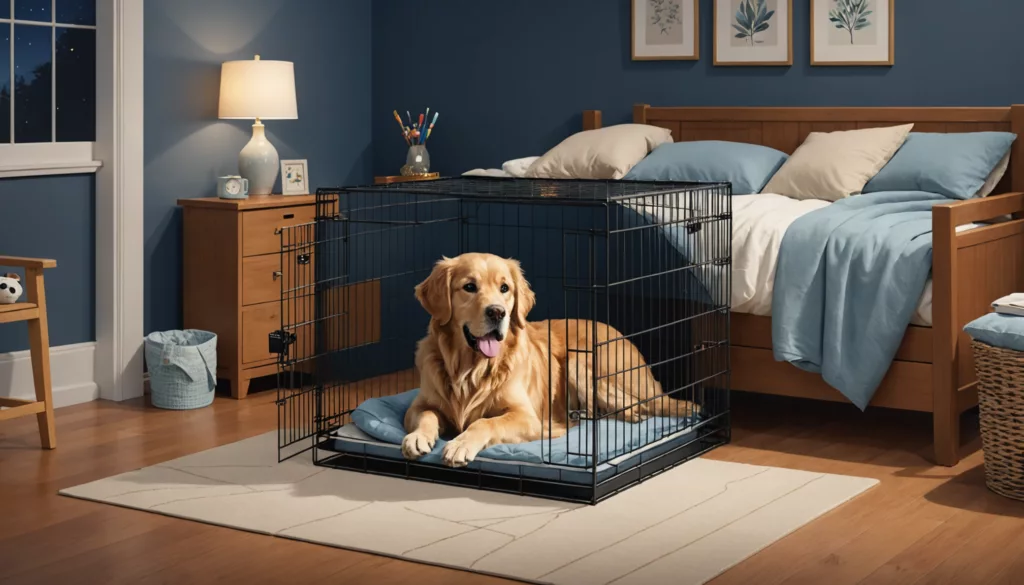
If you notice your dog suddenly pooping in crate at night, you can use specific tools to reduce those nighttime messes. A solid crate setup, effective cleaning solutions, and calm-inducing items often help create a better routine.
Essential Crate Products
Pick a crate that allows standing, turning, and lying down with no extra space for accidents. Leading options include:
• Midwest iCrate Double Door (includes divider panel and removable tray)
• Waterproof crate mat with a non-slip bottom
• Washable absorbent pads for extra backup
Cleaning and Odor Control Solutions
Leftover smells can cause repeat soiling. Enzymatic cleaners break down organic messes more completely than regular cleaners:
• Nature’s Miracle Advanced Formula
• Rocco & Roxie Professional Strength
Comfort and Anxiety Products
Anxious dogs may have more nighttime crate accidents. You can help reduce stress with:
• Gentle pressure wraps
• Calming diffusers or sprays
• Soft crate pads with waterproof backing
Training Aids
Consistent routines often lower nighttime incidents. Consider tools that support scheduled feeding and bathroom cues:
• Timer-based feeding bowls
• Smart cameras for monitoring
• Door bells to signal bathroom breaks
Cost Comparison
| Product Category | Basic | Premium | Professional Grade |
|---|---|---|---|
| Crates | $30-50 | $75-100 | $150-200+ |
| Cleaning Solutions | $15-25 | $30-45 | $50-75 |
| Comfort Items | $20-35 | $40-60 | $70-100 |
| Training Aids | $15-30 | $35-50 | $60-100 |
These recommendations come from recognized trainers and veterinary sources. Actual prices can change by region and store.
Conclusion
Dealing with a dog suddenly pooping in their crate at night can be challenging, but understanding the root causes is the first step toward a solution. Whether it’s related to medical issues, anxiety, or training gaps, there are proven ways to help your furry friend overcome this behavior through consistent routines and positive reinforcement.
Remember that every dog is unique, and what works for one may not work for another. By establishing a proper feeding schedule, ensuring regular exercise, and maintaining the right crate size, you can help prevent nighttime accidents. If the problem persists, don’t hesitate to consult with a veterinarian to rule out any underlying health concerns and get personalized advice for your pet’s specific situation.
Stay patient and committed to helping your dog develop better crate habits. With the right combination of training, routine adjustments, and professional guidance when needed, you can help your dog feel more comfortable and secure in their crate throughout the night.
FAQs
1. Why does a house-trained dog begin soiling the crate at night?
A house-trained dog might start soiling its crate at night due to several reasons. Changes in their routine that disrupt their normal bathroom schedule can be a significant factor. Additionally, digestive issues or food sensitivities can lead to unexpected soiling. Anxiety, especially in new environments, can also trigger this behavior. Dietary changes that upset their stomach balance and age-related challenges in older dogs are also common causes.
3. What issues can cause sudden soiling?
Sudden soiling in dogs can be triggered by various underlying health conditions. Inflammatory bowel syndrome, food-related reactions, and parasitic infestations are known causes. Colitis, an inflammation of the colon, can also lead to sudden changes in bowel habits. In older dogs, age-based incontinence becomes a more common concern.
4. When should you seek professional help?
It is crucial to seek professional help from a canine health specialist if you observe certain concerning symptoms. If your dog’s stool shows a reddish discoloration, or if they have loose stool lasting more than a day, it warrants immediate attention. A noticeable drop in appetite, fatigue, weakness, or excessive retching are also red flags that require veterinary consultation.
